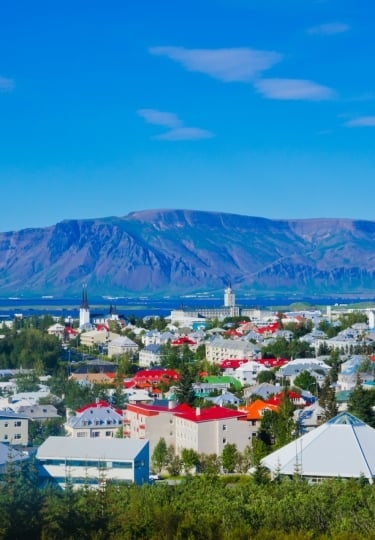For a compact capital city located on a small island in the North Atlantic Ocean, downtown Reykjavik packs in a surprising amount to see and do to captivate curious travelers.
While the landscape outside of Reykjavík offers dazzling, life-affirming experiences, downtown Reykjavik provides culture, gastronomy, and shopping galore. Central Reykjavik is easy to explore on foot. There’s a reliable bus service, too, allowing visitors to cover multiple attractions in one day.
From dining on adventurous Nordic cuisine to exploring the smattering of offbeat museums, discover the best things to see and do in downtown Reykjavik below.
Take in a Performance at Harpa Concert Hall
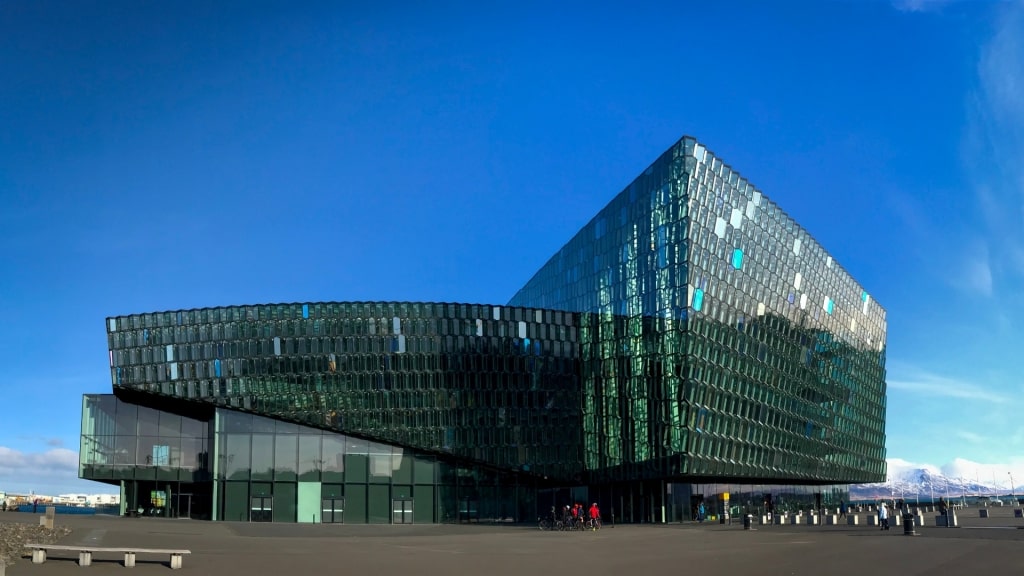
Harpa Concert Hall
Reykjavik’s landmark Harpa Concert Hall shimmers on the waterfront. Marvel at this brilliant, modern building and its colorful geometric glass facade. Designed by Henning Larsen Architects in partnership with Danish-Icelandic artist Olafur Eliasson, Harpa is the home of the Iceland Symphony Orchestra, Icelandic Opera, and Reykjavík Big Band.
A year-round program of opera, jazz, classical, and contemporary music, along with ballet and other dance, brings theater-goers to the three-tiered Main Hall.
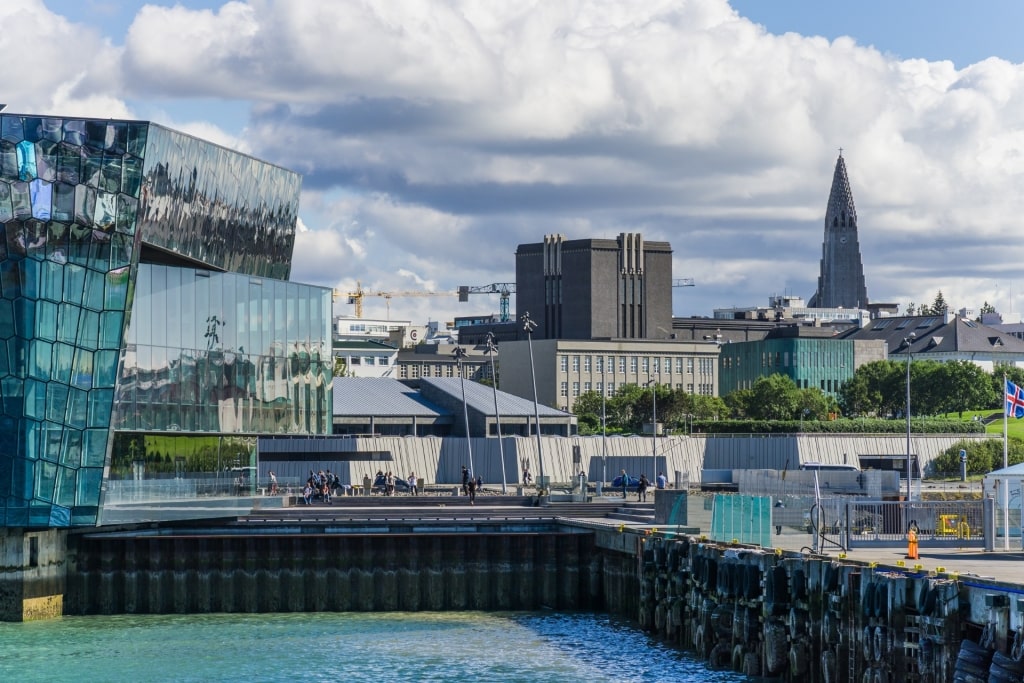
Harpa Concert Hall
Check Harpa’s schedule ahead of your visit if you’re keen to take in a performance, which typically takes place in the evening, while art exhibitions are shown during the day.
Enjoy a break at Hnoss, Harpa’s first-floor restaurant serving tea, coffee, and cakes, along with a menu of fresh Icelandic dishes such as salmon ceviche and tartar of lamb.
Outside the concert hall, admire the bronze sculpture of cellist player Erling Blöndal Bengtsson by Icelandic artist Ólöf Pálsdóttir. The statue was located at Iceland Opera’s former home, on Háskólabíó, but was relocated to its new position in 2014.
Visit Reykjavík City Hall

Reykjavík City Hall
Fans of minimalist architecture will enjoy Reykjavík City Hall on the north shore of Tjörnin, a scenic pond in the center of the city.
The late 20th-century building features a concrete, Brutalist style that belies the natural landscape surrounding Reykjavík. Outside, a green living wall gives a nod to Iceland’s moss-covered rocky landscape.
While the building is largely used for administrative purposes—it’s home to Reykjavík City Council and the city mayor—travelers can view the large 3D-printed map of Iceland inside City Hall’s Tjarnarsalur (Lake Room).

Reykjavík City Hall
The city’s tourist office is also located at City Hall, where you can pick up maps and information.
After visiting City Hall, take a pond-side seat next door at Iðnó. Enjoy coffee, cake, and views of a famous city statue, Monument to the Unknown Bureaucrat, by Magnús Tómasson.
This intriguing sculpture features a briefcase-carrying city worker—seemingly walking in the direction of City Hall—with a large wedge of volcanic basalt replacing the person’s torso and head.
Read: Iceland’s Most Beautiful Places
Marvel at Hallgrímskirkja

Hallgrímskirkja
Reykjavík’s second-tallest building is Hallgrímskirkja, a Lutheran church named after the 17th-century Icelandic poet and cleric Hallgrímur Pétursson.
At 244-foot high, Hallgrímskirkja is the tallest church in Iceland. The building’s unique design features a serrated-edge curved spire, which pierces Reykjavík’s skyline.

Hallgrímskirkja
Hallgrímskirkja was designed in the 1930s. Construction began in the 1940s and was completed in 1986, which explains the church’s Art Deco-meets-modernist look.
Gain an unrivaled perspective of Reykjavík from the top of Hallgrímskirkja at the observation level. You can climb the steps to the top or take the elevator.
Learn About the North Lights at Aurora Reykjavík
The Northern Lights is one of nature’s greatest shows. While you’re highly unlikely to catch them during summer—they’re most visible between September and March—you can learn all about them at the Aurora Reykjavík museum.
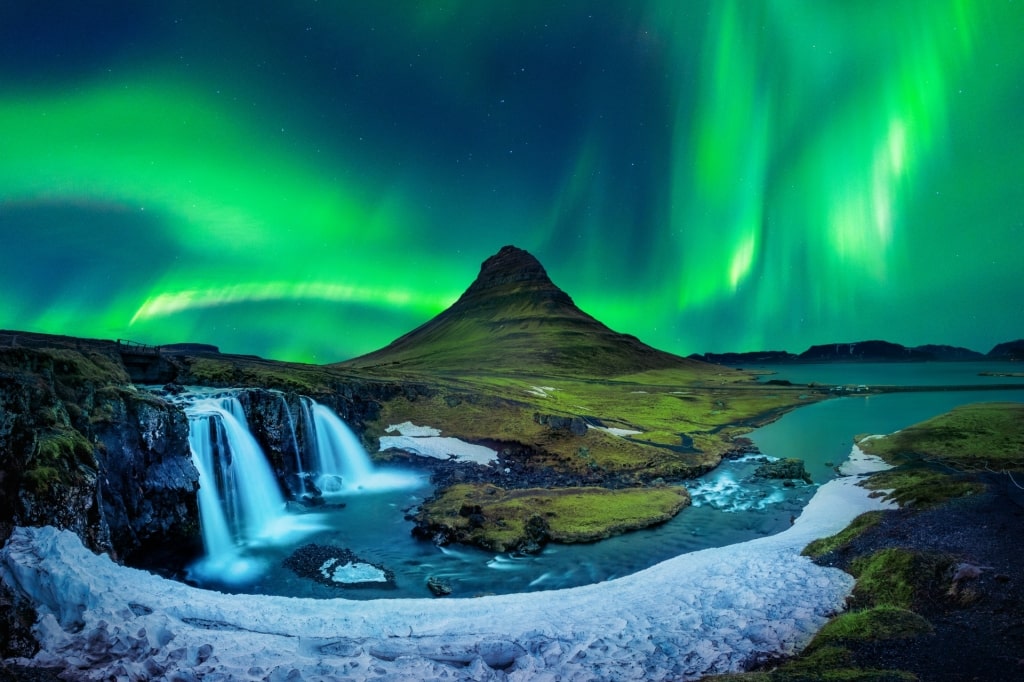
Northern Lights
Walk through an interactive exhibition to learn about what causes this natural phenomenon to appear. There’s a 4K definition, 23-foot-wide screen displaying the magnificent Northern Lights as captured over Iceland, almost as dazzling as seeing the real thing.
Photography workshops teach visitors how best to capture the lights. There are virtual reality demos and a photo booth that portrays the northern lights in the background.
Relax in Hljómskálagarðurinn Park

Hljómskálagarðurinn Park
Downtown Reykjavík’s Hljómskálagarðurinn is a serene park, known for its birdlife, large central pond, and art sculptures, next to the National Gallery of Iceland and Reykjavik City Hall.

Hljómskálagarðurinn Park
Wander through the park and around Tjörnin, a pond to the north of the park. Here, you’re likely to see geese, swans, ducks, and Arctic terns. Many of the birds enjoy this spot year-round thanks to a geothermally-heated corner of the water.
Stroll around the park to take in the sculptures, including the sitting man and the statue of Tómas Guðmundsson near Tjörnin. Hljómskálagarðurinn also has a children’s playground.
Read: Visiting Iceland in the Summer
Visit Reykjavík Cathedral

Reykjavík Cathedral
The official seat of the Bishop of Iceland is the 1787-built Reykjavík Cathedral, an elegant church next to Althingi Parliament House.
The modest cathedral was one of downtown Reykjavík’s earliest buildings, completed a century earlier than the parliament building.
Spot the neo-baroque decorations adorning Reykjavík Cathedral. Inside, the pulpit, frame around the altarpiece, and pews were designed by A. Winstrup, the royal builder-master in Copenhagen at the time.
Outside the cathedral, the grassy Austurvöllur Square is home to a statue of parliamentarian and scholar Jón Sigurðsson, with a number of cafés and restaurants dotted around the outside.
Explore Reykjavik’s Thriving Street Art
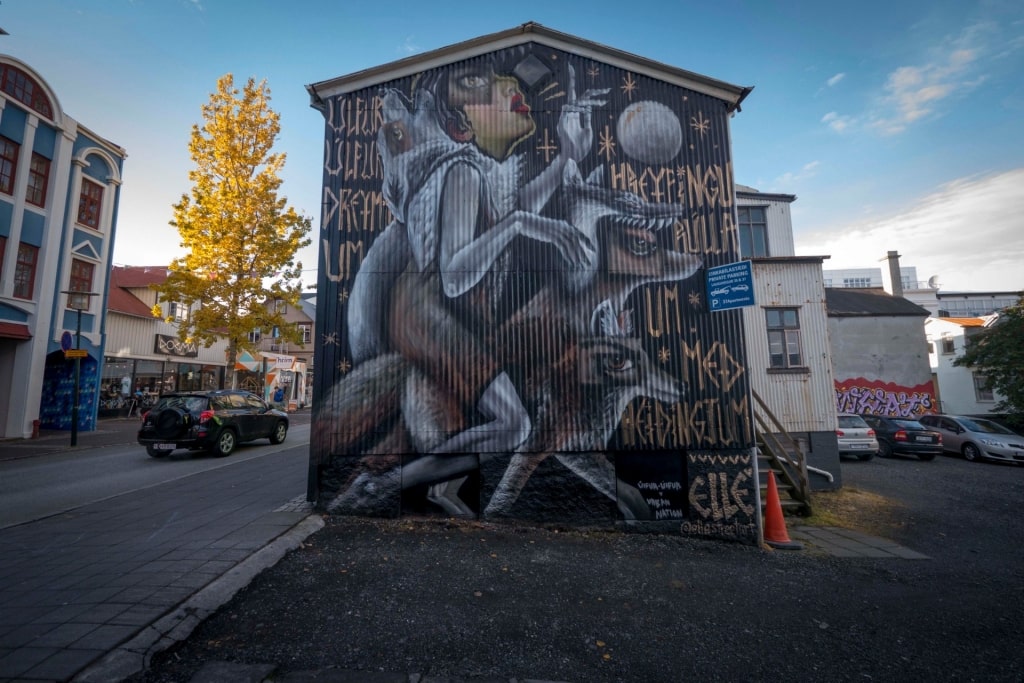
Street art in Reykjavik Photo by Bryan Ledgard on Wikimedia Commons, licensed under CC BY 2.0
One of the big surprises for many first-time travelers to Reykjavík is the city’s bright and evocative street art.
From cheerful photo-realistic wall murals to urban graffiti, take in as much of it as possible on a street art walking tour.
Inspired by album covers and music videos, street art began to emerge in downtown Reykjavik in the early 1990s. Today, many businesses in the city embrace this free-thinking style of art.
Some of the city’s most prominent visual artists are Selur, Sara Riel, Margeir Dire, Geoffrey Skywalker, and Arnór Kári.
Wander along Hverfisgata and Laugavegur and the lanes branching off each street to revel in thought-provoking street art. These central arteries in Reykjavík and two of the city’s oldest commercial streets.
Trace Iceland’s Viking History at the Settlement Exhibition
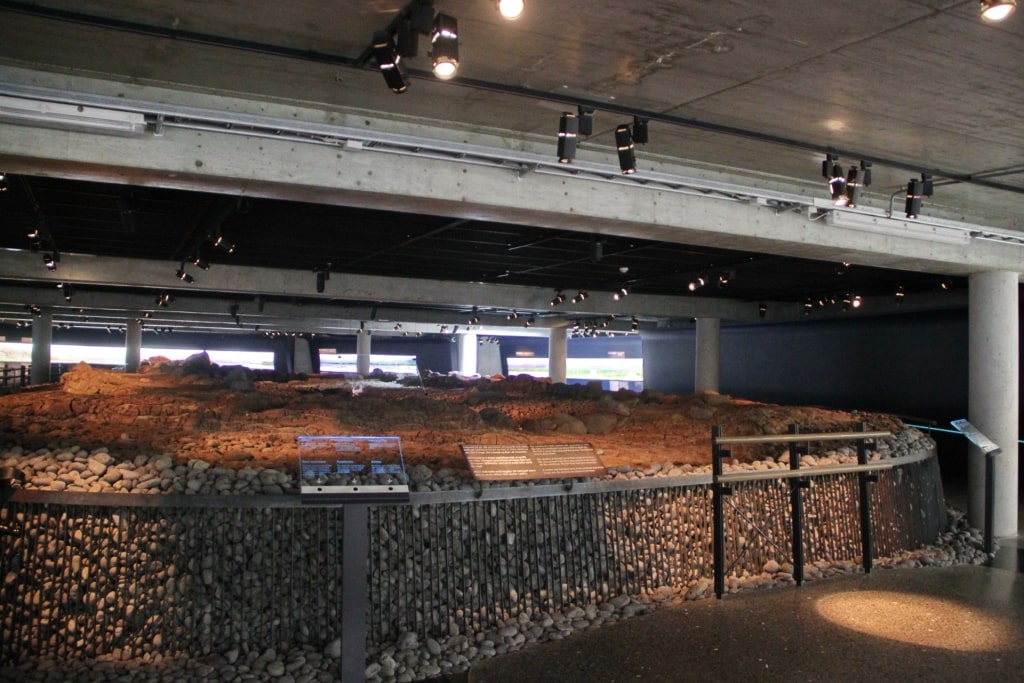
Settlement Exhibition Photo by Luc Coekaerts on Flickr, licensed under CC0 1.0
The Settlement Exhibition is one of the best places to learn about Reykjavík’s history, including the Viking Age, from the early period of settlement through to the present day.
Join a guided tour to view an open subterranean archaeological excavation. The site was uncovered during building works in 2001, which identified the earliest evidence of human settlement in the city, including an extraordinary 10th-century hall or longhouse.
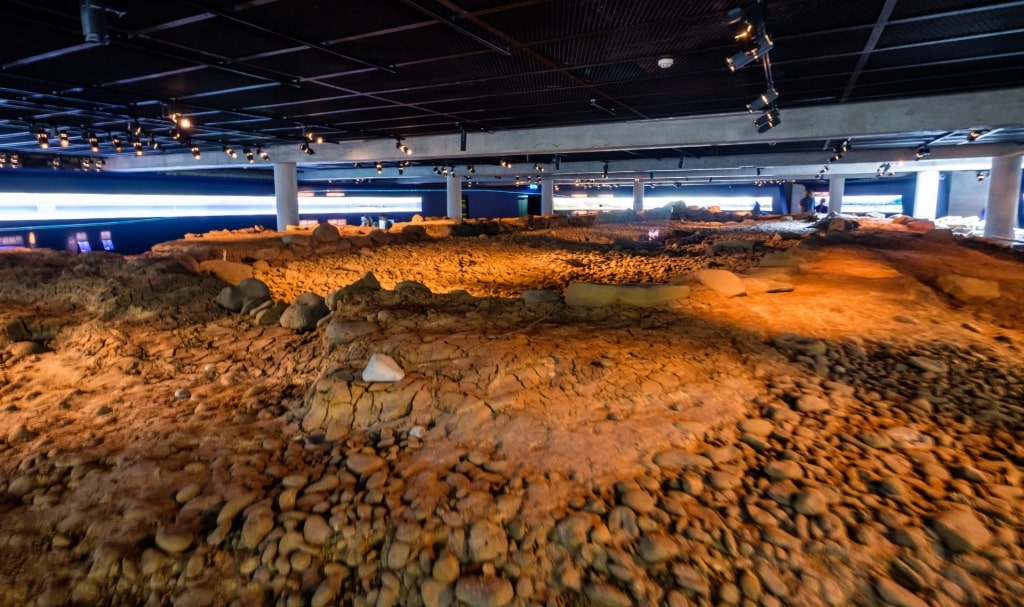
Settlement Exhibition Photo by alh1 on Flickr, licensed under CC BY-ND 2.0
An immersive exhibition alongside the excavation takes visitors on a journey back to a Reykjavík farm of the settlement period and looks at how Viking Age buildings were constructed.
As part of your tour, you could also visit Aðalstræti 10 (The Settlement Exhibition is at Aðalstræti 16), Reykjavík’s oldest existing building, dating from 1762.
Built at a time when Reykjavík was the size of a village, this historic building is now a museum showcasing two exhibitions, Reykjavík 1918 and A Town of Turf Houses.
Bathe in a Geothermal Swimming Pool
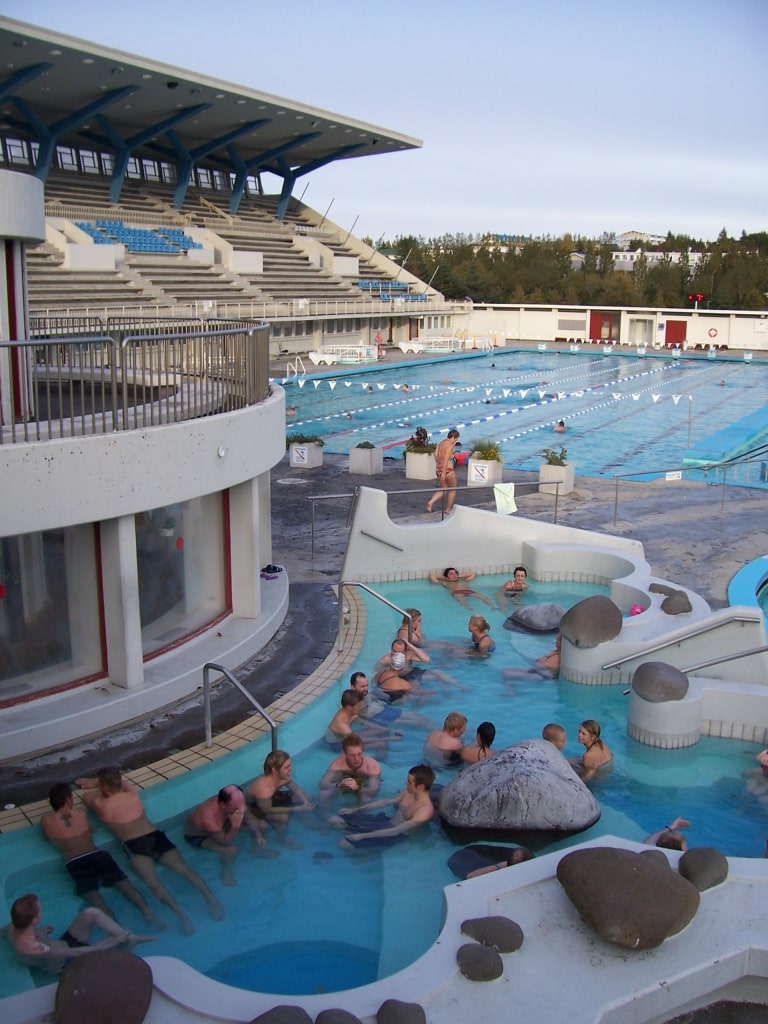
Laugardalslaug Photo by (WT-en) Meltwaterfalls on Wikimedia Commons, licensed under CC BY-SA 1.0
Relaxing and swimming in a geothermal pool is a big part of Icelandic culture and Reykjavík is home to 17 geothermal pools.
Go for the most central, Sundhöllin. Designed in an art deco style by architect Guðjón Samúelsson, Sundhöllin opened in 1937 and is the oldest geothermal pool in Reykjavík.
The family-friendly spot features an 82-foot pool, a separate children’s pool, an indoor pool, diving boards, hot tubs, a sauna, showers, and indoor and outdoor changing cabins.
If you prefer a larger pool, the city’s Laugardalslaug outdoor pool—lying just outside of the downtown area—is twice the length of Sundhöllin, at 164 feet. Here, there are waterslides, steam baths, a children’s pool with a slide, a separate indoor pool, private dressing, and shower areas.
Read: Incredible Hot Springs in Iceland
Savor Delicious Icelandic Cuisine

Reykjavík
Reykjavík boasts a dynamic dining scene, with the city’s top-drawer restaurants tapping into a bounty of North Atlantic produce. Mountain herbs, root vegetables, cod, and lamb frequently appear on the city’s locavore menus.
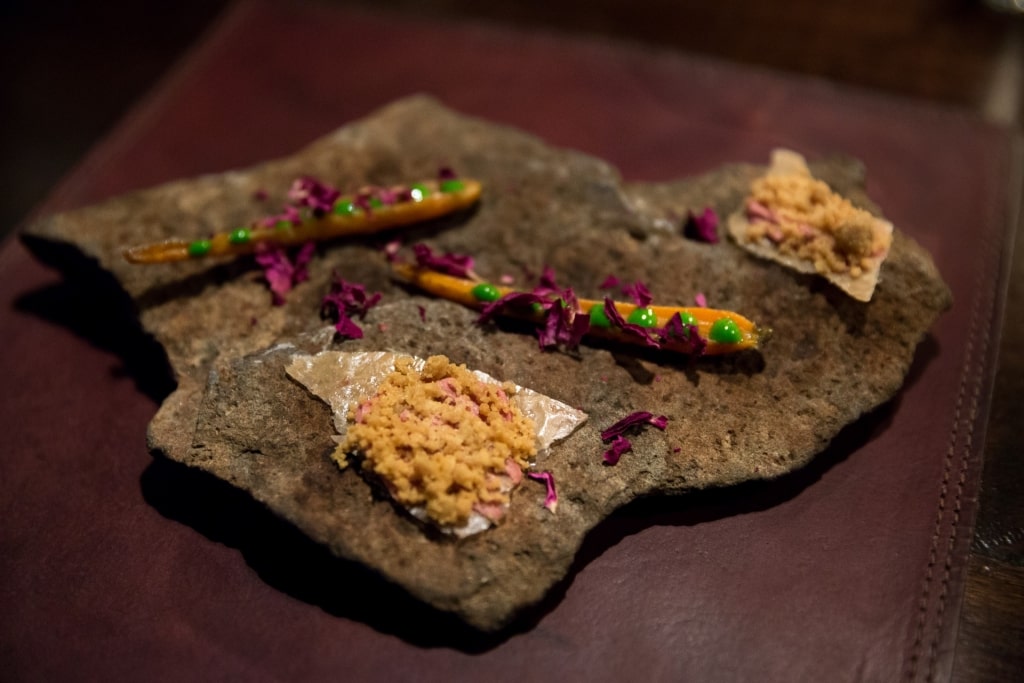
Dill Photo by City Foodsters on Wikimedia Commons, licensed under CC BY 2.0
Try Dill, an award-winning restaurant helmed by chef Gunnar Karl Gíslasson, on Laugavegur. Dishes such as charcoal-grilled new potatoes with a 24-month-aged Icelandic cheese called Tindur, lovage, and potato foam, are sublime.
Another dish, the cured and steamed cod served with pickled wasabi stems and grilled wasabi leaves, has an incredible depth of flavor and pairs well with the restaurant’s organic wines.
The intimate 11-seat ÒX—meaning to grow in Icelandic—is another gastronomy hotspot in downtown Reykjavík. Chef Thrainn Freyr Vigfusson draws on hyper-local produce to create modern dishes such as butter-poached cod with shrimp; scallops with fermented parsnip, blueberries, and cream; and cured langoustine, marigold, and dulse ( a ruby-red seaweed found on north Atlantic shores).
SKÁL, led by three friends, chefs Gísli Matt, Björn Steinar, and Gísli Grímsson, is Iceland’s first food hall. This reservation-free diner serves tasty plates of Nordic cuisine with a selection of biodynamic wines, local craft beers, and cocktails featuring foraged herbs.
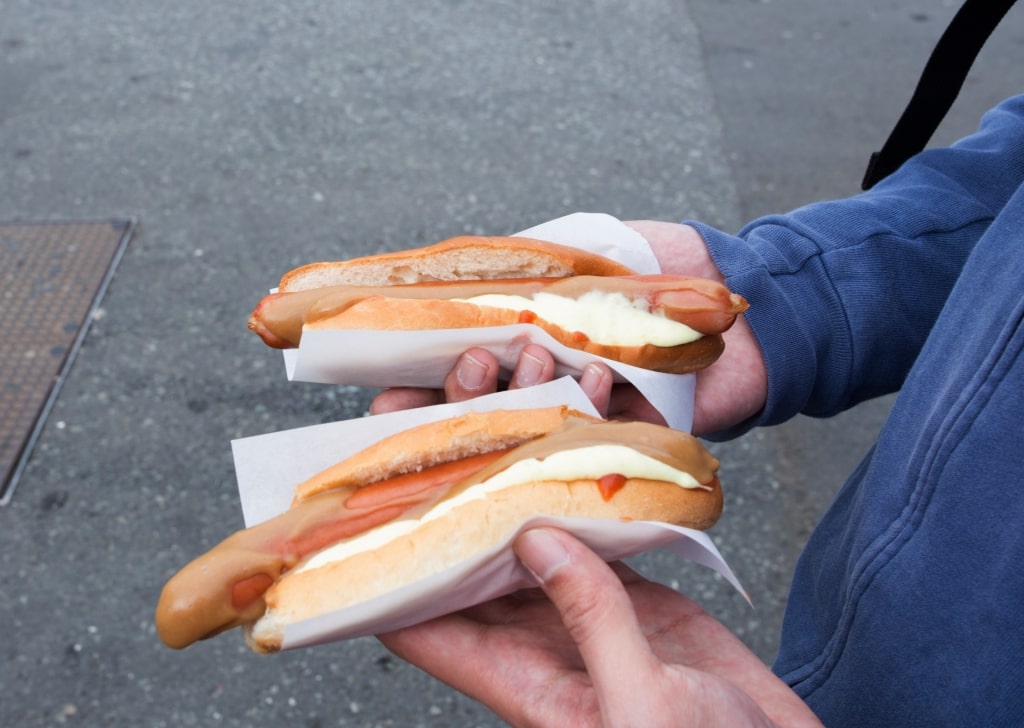
Bæjarins Beztu Pylsur
If you’re looking for a more casual bite to eat, try a local favorite; Bæjarins Beztu Pylsur, which translates as the “best hotdog in town”. Opened in 1937, Bæjarins Beztu Pylsur is a Reykjavík institution. Go for the works—a hotdog topped with ketchup, sweet mustard, fried and raw onion, and remolaði, a mayonnaise-style condiment.
Save room for ice cream at Ísbúðin litla Valdís, a charming parlor serving delicious soft scoops in home-baked waffle cones on Frakkastígur.
Admire Artwork at the National Gallery of Iceland
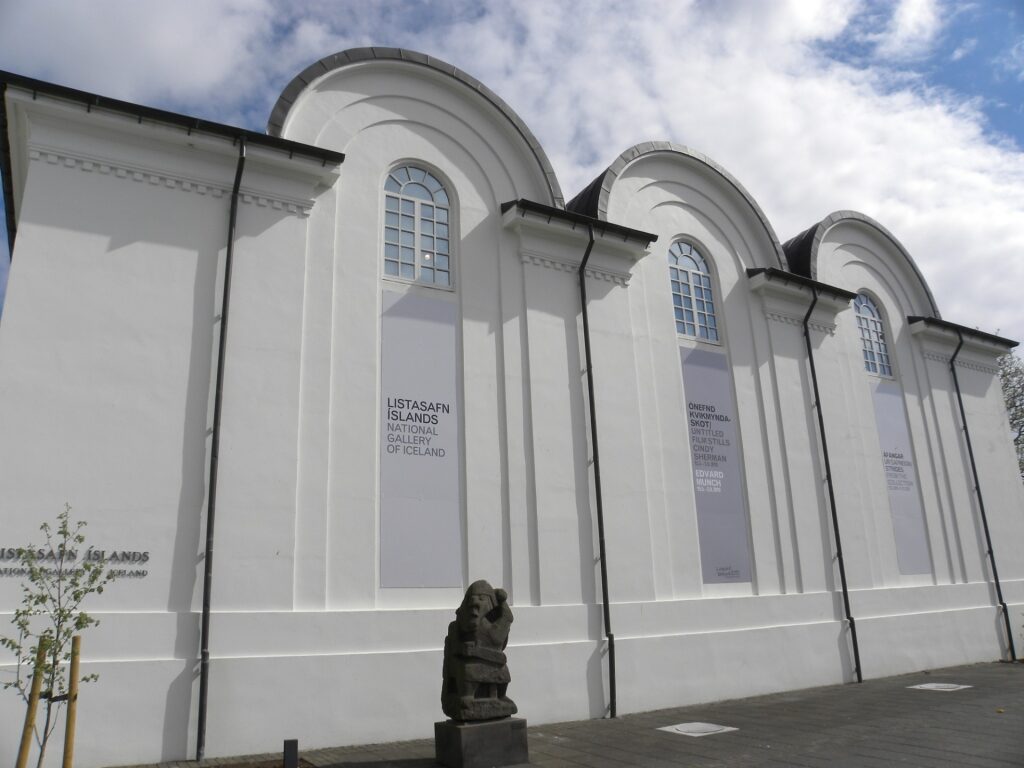
National Gallery of Iceland Photo by JasonParis on Flickr, licensed under CC BY 2.0
The National Gallery of Iceland is the best place to explore mind-broadening 19th- and 20th-century, mainly Icelandic art.
The gallery has three sites and owns 14,000 works. The main gallery, a sugar-white building next to Reykjavík Free Church, features rotating exhibitions over three floors, a gift store, and a café.
A short distance away, The House of Collections showcases the Treasures of a Nation exhibition. Treasures of a Nation includes paintings depicting scenes of Icelandic nature and culture from the latter part of the 19th century through to the present day.
You could also view the city from the perspective of artist Ásgrímur Jónsson in his collection of paintings, A Window in Reykjavík. Jónsson bequeathed his home, studio, and all of his works to the Icelandic nation, which can be seen at Bergstaðastræti 74.
Shop for Icelandic Designs and One-off Pieces
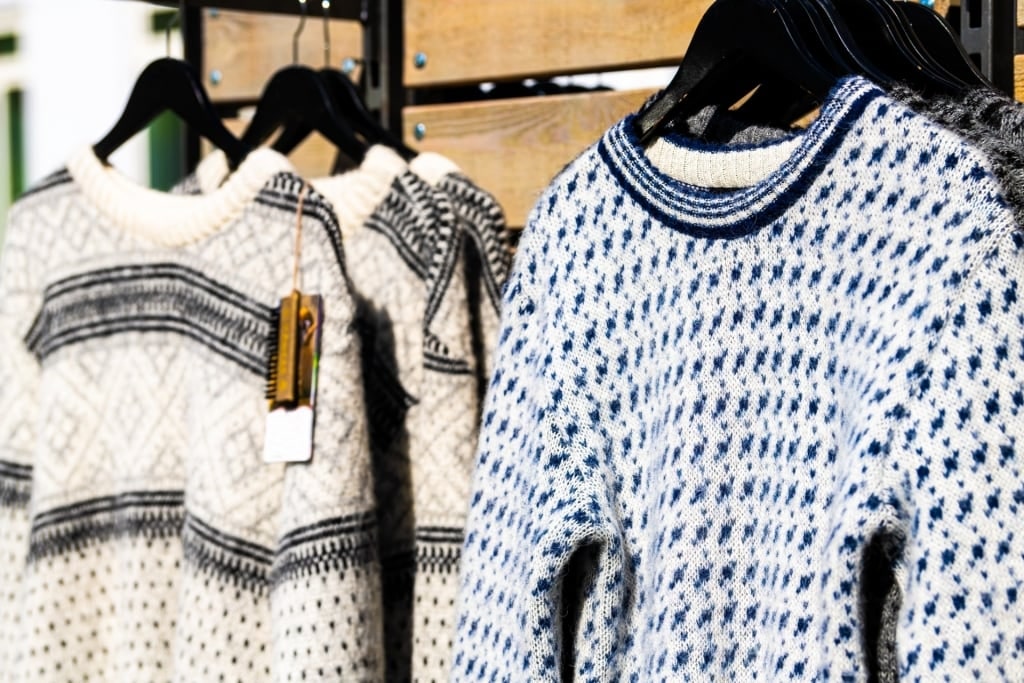
Sweater
Shopping is one of the best things to do in Reykjavik. Its small size, with a pedestrianized main thoroughfare, means it’s easy to get around the many vintage stores and independent boutiques.
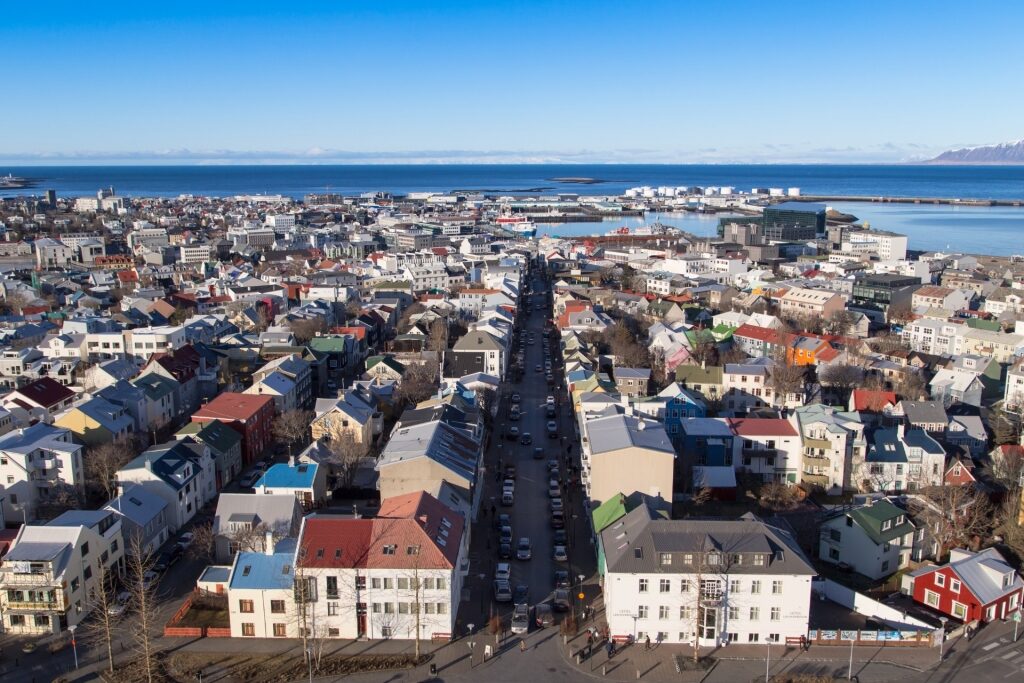
Laugavegur
Laugavegur is Reykjavik’s best shopping street. Hörg sells beautiful pieces for men and women. Head to Nordic Store Sweaters for chunky knits. The Nordic Market sells kitsch crafts, and Aurum by Guðbjörg is the place to go for Icelandic jewelry.
Spúútnik, in the middle of Laugavegur, is a vintage store that has been around since 1986. Browse the rails of pre-loved items to pick up a one-off piece.
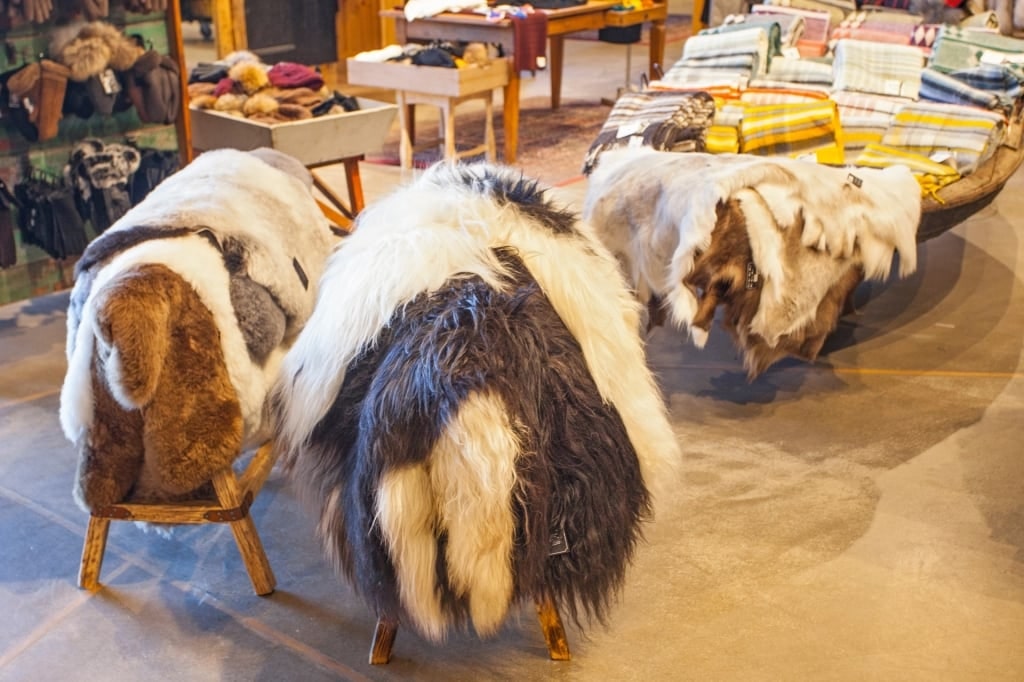
Shop in Reykjavik
Kirsuberjatréð, on Vesturgata, is another must-visit. It’s a concept store run by female artists, where you’ll find handcrafted jewelry, items for the home, leather goods, and hand-painted ceramics.
Fischersund near Ingólfur Square is a heavenly apothecary by Sigur Rós frontman Jónsi and his family, located in a former recording studio. Shoppers can pick up perfumes, natural beauty products, and handmade gifts.
Shop at Hafnartorg—on the waterfront next to Harpa Concert Hall—for a mix of international and Icelandic brands and upmarket restaurants and bars. A standout Hafnartorg store is FÓLK for gorgeous homeware.
Discover Two of Reykjavik’s Offbeat Museums
For a close-packed city, Reykjavik has a staggering array of offbeat museums. Tour a selection of them on vacation to gain an insight into alternative Icelandic culture.
The pocket-size Icelandic Punk Museum is located in former underground public restrooms and explores the country’s punk music scene.

Einar Jónsson Museum Photo by Guillaume Baviere on Flickr, licensed under CC BY-SA 2.0
You could also visit the Einar Jónsson Museum to see works by the influential sculptor. Einar Jónsson is regarded as one of Iceland’s first sculptors. He donated his life’s work to the Icelandic people in 1909 on the condition that he could choose the location for a space in which to display it.
Jónsson selected a “desolate hill” outside the downtown Reykjavik area and the stark, castle-like structure that was built there is his largest and arguably most impressive work.
For a more conventional museum experience, the National Museum of Iceland can’t be beaten for its splendid treasures of the country’s past.
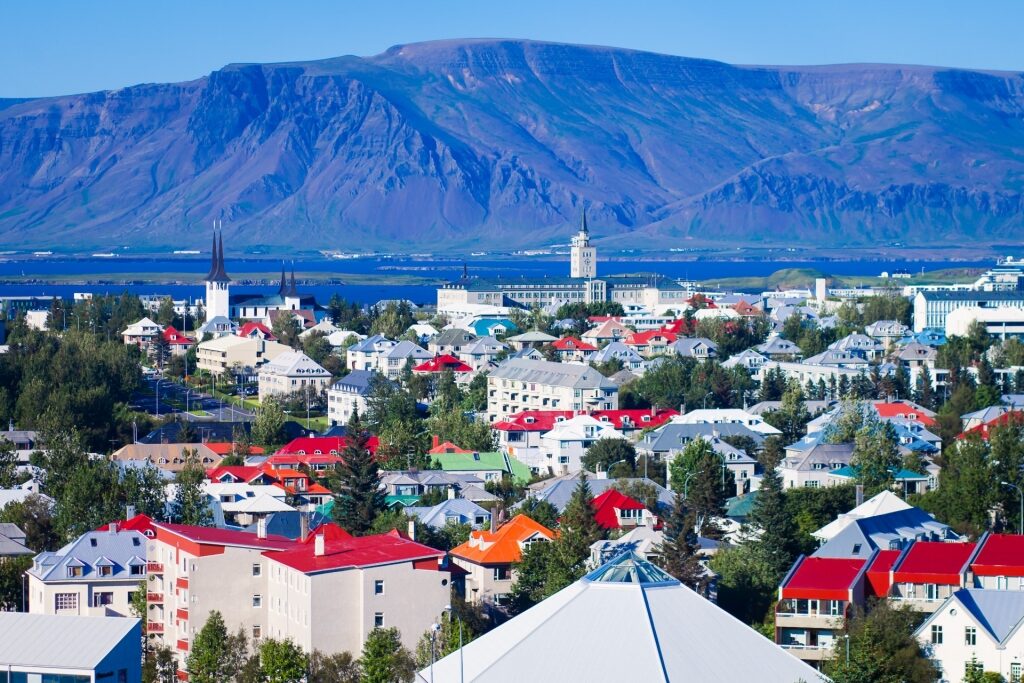
Downtown Reykjavik
A cruise to Reykjavik is the perfect way to enjoy the city’s dynamic dining, cultural, and shopping scenes. Find the perfect Iceland voyage by browsing Celebrity’s range of cruises online.
